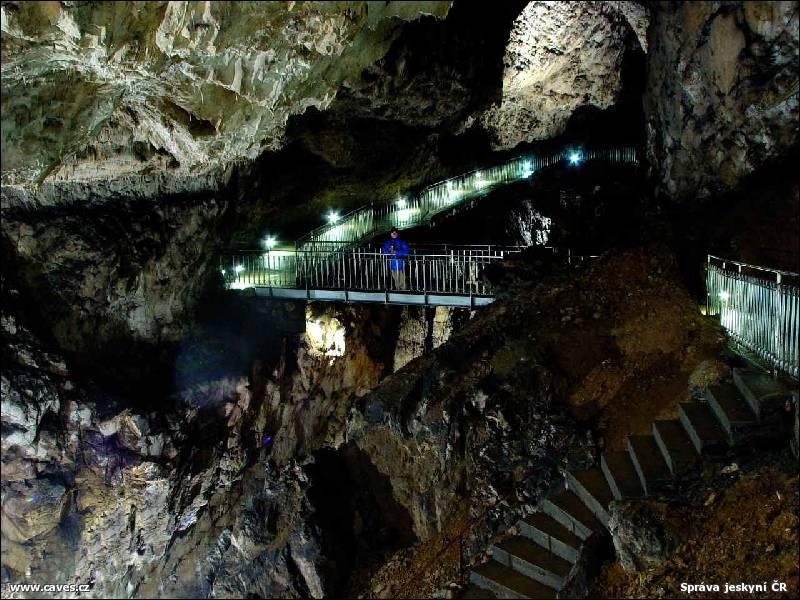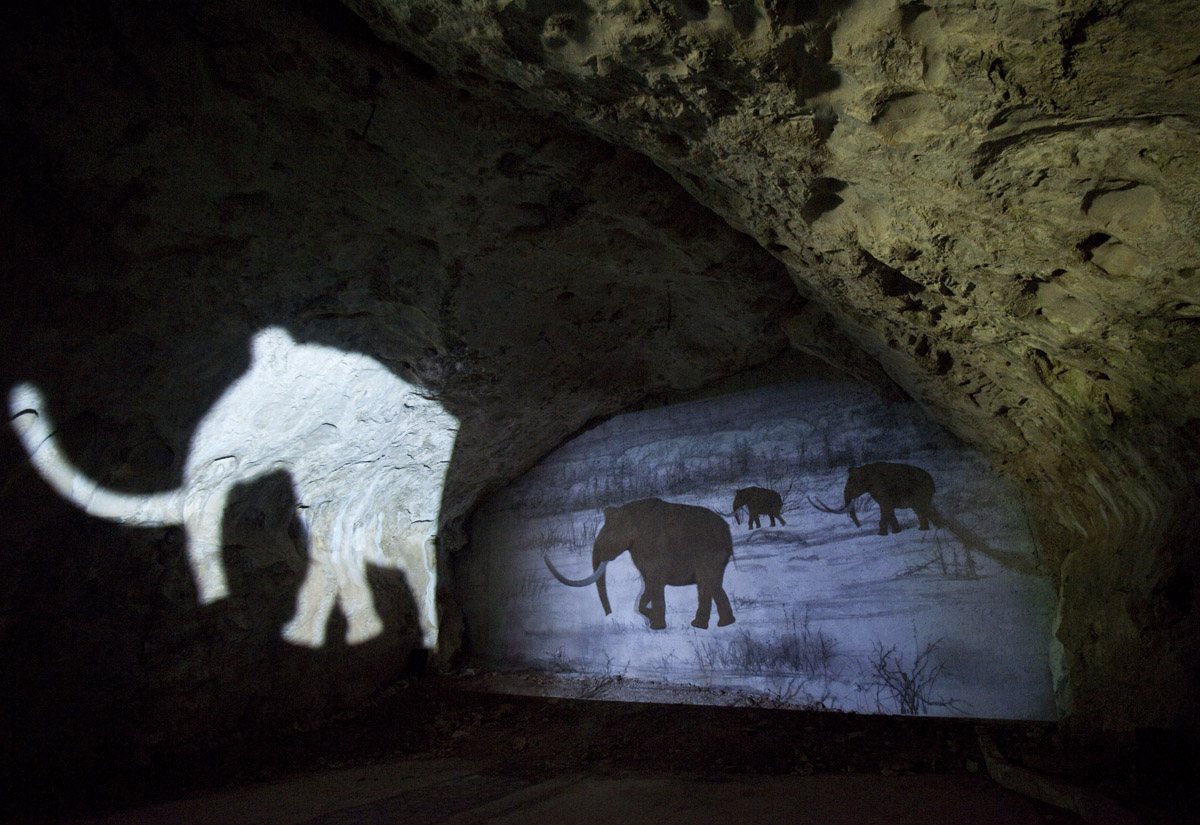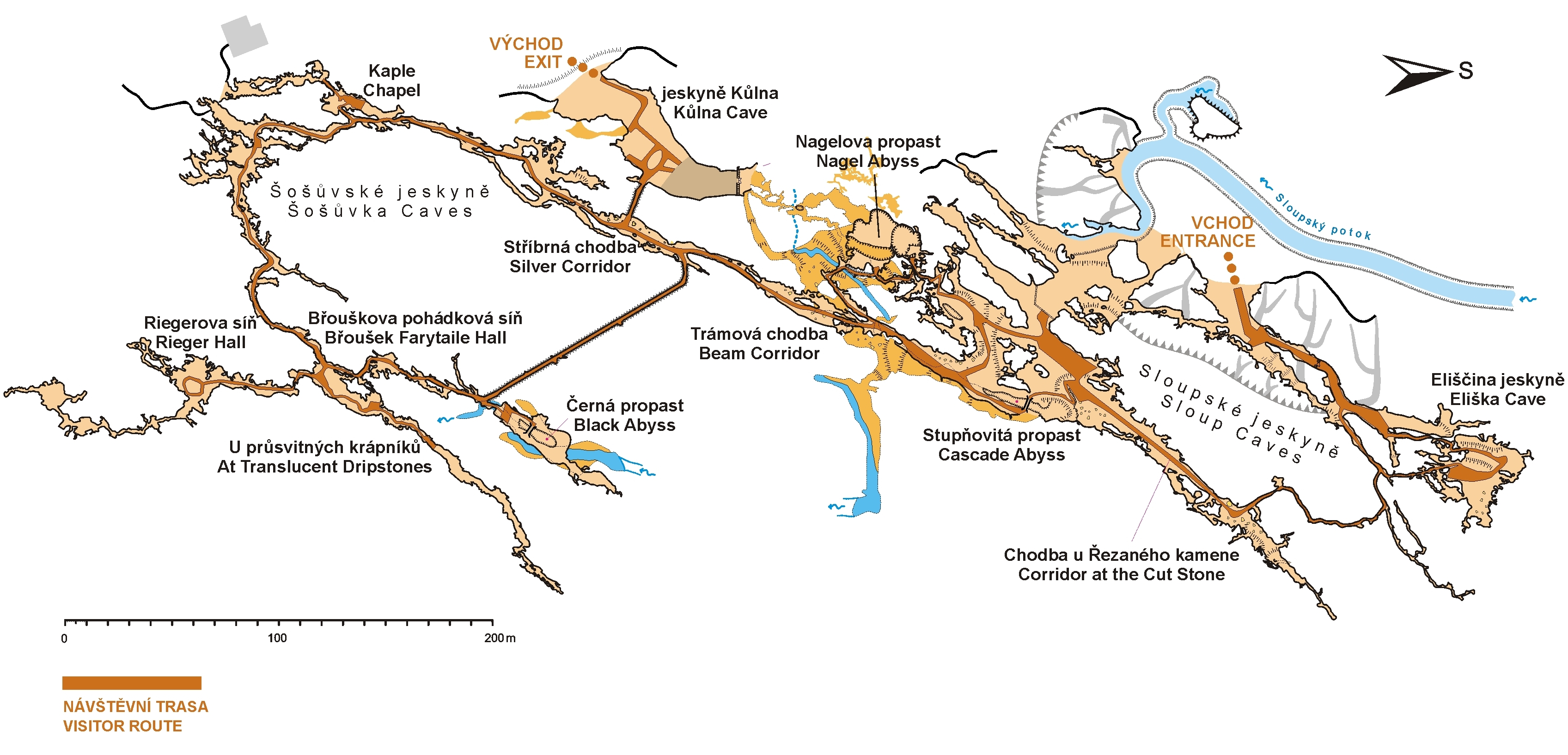Sloup–šošůvka Caves - Visit
 The tour of the caves starts in an entry portal and through a wide passage the visitors come to the Moonmilk Cave, which has been known since time immemorial. It was named after the special sinter coating (called moonmilk) covering the walls there. In the Moonmilk Cave there are bronze plaques with portraits of the remarkable karst explorers Dr. Jindřich Wankel and his grandson Prof. Karel Absolon. The tour continues to the Elizabeth Cave. It is a beautiful hall with dripstone and moonmilk decorations. The special acoustics of this
The tour of the caves starts in an entry portal and through a wide passage the visitors come to the Moonmilk Cave, which has been known since time immemorial. It was named after the special sinter coating (called moonmilk) covering the walls there. In the Moonmilk Cave there are bronze plaques with portraits of the remarkable karst explorers Dr. Jindřich Wankel and his grandson Prof. Karel Absolon. The tour continues to the Elizabeth Cave. It is a beautiful hall with dripstone and moonmilk decorations. The special acoustics of this
hall are demonstrated to the public with reproduced music. The underground tour leads through the artificially created passage into the most extensive part of the Sloup-Šošůvka Caves – Old Rocks. The walls blackened with smoke from wood chips are evidence of ancient expeditions to the cave. The part called Old Rocks begins with the huge Gothic Passage.
At the point of „Cut Stone“, in 1775 a count Karel Salm had two sinter plates cut for tables in the Rájec Chateau. The widening passage Gothic Passage is terminated by the 65m deep Stepped Abyss. The visitors pass by spaces used for recuperation programs, so called speleotherapy. During reconstruction in 1997, the Stepped Abyss was spanned with a bridge and a new non-traditional view is revealed to the visitors. The next stop is the Vertical Abyss. The spaces here were discovered by Karel Absolon in the year 1900. The jewel of this part and the whole system of the Sloup-Šošůvka Caves is the Nagel Abyss. It was discovered in 1748 by the mathematician J. A. Nagel in the lower levels of the cave. Nowadays, this abyss is accessible thanks to two bridges. It is about 90 m deep (from the ceiling to the surface of the Sloupský Brook in the lower level of the cave – and due to its dimensions it is one of the biggest underground abysses in the Czech Republic.
 From the Nagel Abyss the foot trail leads to the Beam Passage. It is named after ancient beams anchored horizontally in the passage. Their origin is not known precisely. Probably they were the bearers of a scaffold used either as a platform for people hiding during the Thirty Years War, or for exploitation of stalactites and stalagmites. The Beam Passage leads to the 260m long Silver Passage. In previous times it was named after sparkling crystals of a sinter decoration plentifully covering the walls. As chips of woods were used here, the sinters are dusky today. The last stop of the Short Cave Tour is in the middle of the Silver Passage. The visitors leave the underground area through the Kůlna Cave.
From the Nagel Abyss the foot trail leads to the Beam Passage. It is named after ancient beams anchored horizontally in the passage. Their origin is not known precisely. Probably they were the bearers of a scaffold used either as a platform for people hiding during the Thirty Years War, or for exploitation of stalactites and stalagmites. The Beam Passage leads to the 260m long Silver Passage. In previous times it was named after sparkling crystals of a sinter decoration plentifully covering the walls. As chips of woods were used here, the sinters are dusky today. The last stop of the Short Cave Tour is in the middle of the Silver Passage. The visitors leave the underground area through the Kůlna Cave.
The Long Cave Tour continues through the Silver Passage. Old writings on the walls (among others even the signature of the mathematician J. A. Nagel from 1748) indicate how far into the cave people were able to get. At this place the tour continues to the Šošůvka Caves, which were gradually discovered in 1889–1915. They are not as extensive as the Sloup Caves, but there is a very nice and well-preserved dripstone decoration there. The next steps lead the visitors to the Broušek Fairytale Hall. There is a unique stalagmite formation called Candle. Then visitors can continue to the Rieger Hall and after go to the Black Abyss. The Black Abyss leads to the surface of the Sloupský Brook at a depth of 70 m under the tourist path. From the bridge, built here by Karel Absolon for research purposes, visitors can look down into the abyss. And the stop at the abyss is also the last stop in the Šošůvka Caves. From the Black Abyss through an artificial tunnel the visitors get back to the Silver Passage and go out through the Kůlna Cave.
Short tour
Tour duration: about 60 min
Tour length: 890 m
Long tour
Tour duration: about 100 min
Tour lenght: 1760 m
Winter tour:
Tour duration: about 90 min
Tour lenght: 950 m
Air temperature: 7-8 °C (46°F)
Relative humidity: about 99 %
